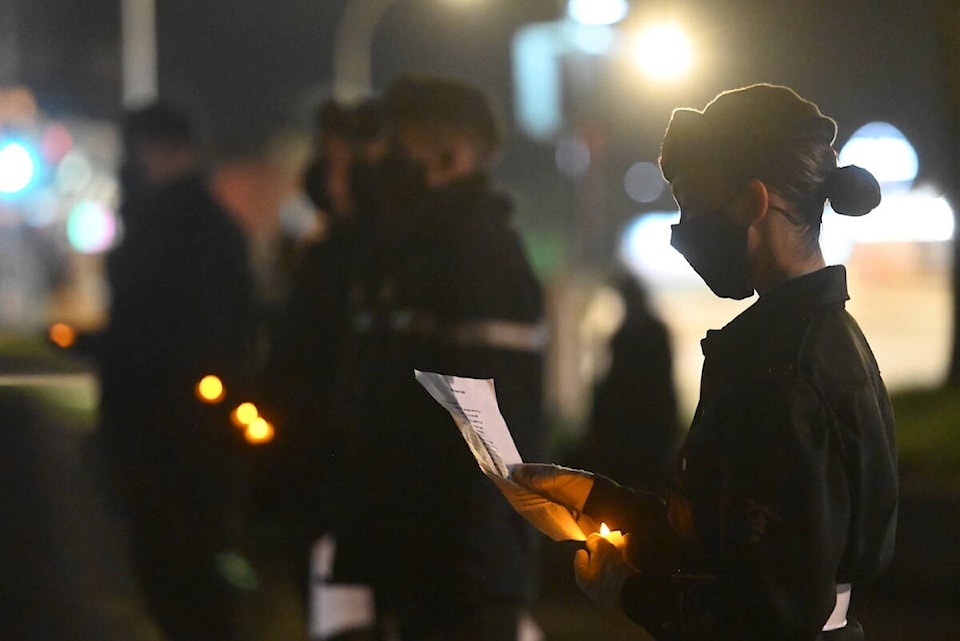Many people were totally done with COVID-19 by the time 2021 arrived, but the virus clearly wasn’t done with us.
Chilliwack started 2021 with 140 cases recorded in the first week of January, which was the highest case count per 100,000 in the province.
Planning for the vaccine rollout, the largest immunization program in B.C. history, began in January and gave many hope that things might return to some semblance of normalcy.
Mass vaccinations for seniors and Indigenous elders got underway in March at malls and other sites, as school, hospital, and care-home infections were reported. They were calling for better times by summertime.
There were vaccine clinics in schools, malls, even on beaches and in parking lots, and other walk-in opportunities created to make it easier.
Chilliwack was averaging between 10.1 and 15 cases of COVID-19 per 100,000 people by April.
By May, half of B.C. had received a first vaccine dose.
Fraser Health decided in June to make vaccine clinics ‘low-barrier’ in high-transmission areas in Fraser East, with pre-registration not required.
In July, health officials tried pop-up vaccination clinics to meet people “where they were at,” especially the under-40 crowd in places like the Walmart parking lot, at the Downtown Community Market, or on Main Beach at Cultus Lake.
Worldwide cases were on the rise again as mask mandates slipped, variants were detected, and vaccination lagged.
In August Chilliwack was quite behind the provincial average for first doses, at 71 per cent, and 60 per cent for second doses.

The vaccine card program was introduced on Aug. 23, and led to a stampede of people getting registered to get vaccinated after the Delta variant was recognized as a variant of concern.
A small percentage of those opposed to the COVID-19 vaccine, and the B.C. vaccine card, joined protests but local vaccination rates still climbed monthly.
The COVID-19 situation in B.C. in the summer of 2021 became known as the “pandemic of the unvaccinated,” provincial health officer Dr. Bonnie Henry said, and the 70 per cent surge in cases was due to 20-to-40 crowd who hadn’t had their first dose yet.
Under the B.C. Vaccine Card program, British Columbians were asked to get one dose of vaccine by Sep. 13 and be fully vaccinated by Oct. 24 to participate in certain recreational and social events.
Anyone wishing to remain unvaccinated would not be allowed to travel outside Canada.
From Sept. 28 to Oct. 4, Chilliwack had 38 daily cases per 100,000, and was declared a “hotspot” in the region, according to data from the BCCDC.
Again a series of new restrictions were imposed in terms of attending both social and organized gatherings in Abbotsford, Agassiz, Harrison, Hope, Chilliwack and Mission.
These rules were necessary because unvaccinated COVID patients were putting a strain on local hospitals, officials underlined, including an outbreak at Chilliwack General Hospital. The outbreak was declared on Aug. 30 and ended on Sept. 24.
Free rapid tests were handed out to the public on a trial basis, and due to the Chilliwack spike on Oct. 9, in front of Service Canada. The vaccination rate for Chilliwack was sitting at 72 per cent, compared to 81 per cent provincewide. At the time, the Delta variant was accounting for 100 per cent of new cases in B.C.
On Labour Day 2021, volunteers On Sept. 6 at 1 p.m. people dropped off hearts, thank-you cards and posters for the workers at the Chilliwack Health Unit, in the wake of small protests against the vaccine mandate at various health care facilities.
City of Chilliwack had changed its council meeting practice from virtual to public meetings, and things were opening up again when rising case counts in the fourth wave shifted public health orders again with new restrictions. In November Chilliwack council urged citizens, including those holdouts, to get vaccinated.
Special regional health orders remain in place for Chilliwack and the Eastern Fraser Valley. But even once those are lifted, it will still be important for everyone to follow provincial health orders and get vaccinated if they are able to, Mayor Ken Popove said.
Case counts began rising again in early December with the Omicron variant of concern spreading like wildfire across Canada. It led to a whole new raft of restrictions, and registrations for booster shots.
RELATED: Time to double down on COVID, says ER doc
RELATED: Thanking health care professionals
